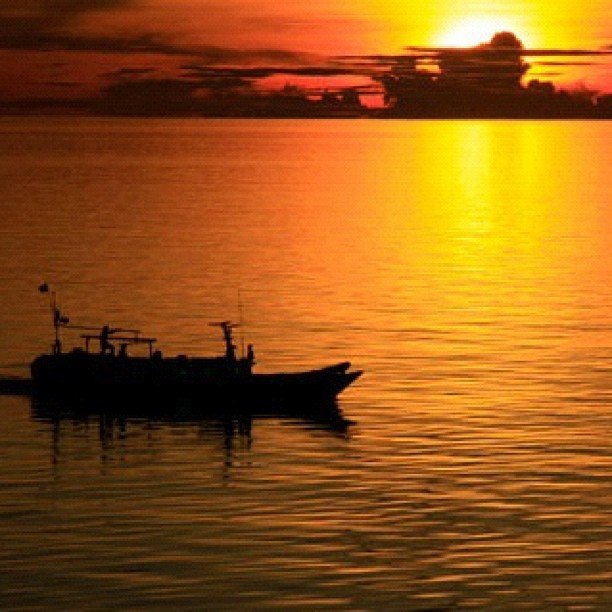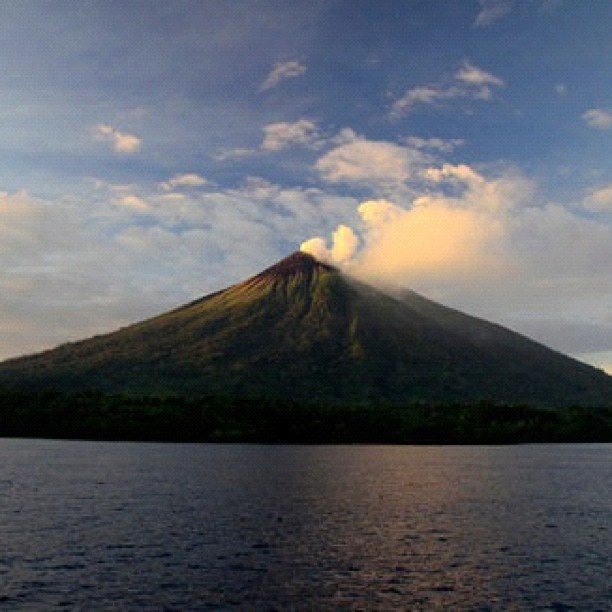
"The Malay Archipelago" is the title of a book by Alfred Wallace (1823-1913), a British observer of nature. Despite the title, the book mostly uncovers the natural rich of Indonesia. The book was first published 140 years ago, and continues to be published up to the present days, making it one of the most important classical books.
The book contains the author’s observation during eight-year travel across Indonesian islands such as Sumatra, Java, Kalimantan (Borneo), Sulawesi, Moluccas, and Papua. It is fair enough to say that this is the most important and most complete book about the history of nature and human of the archipelago up to these days.
Wallace wrote a note when he visited Ternate (Moluccas) in 1858, which is later known as the "Letter from Ternate". Here he referred to "natural selection in the evolutionary process" even before Charles Darwin. Many people believe, Wallace was, instead of Darwin, who should have been entitled to the title of Father of the Theory of Evolution.
Now Ternate turned the capital of North Maluku Province which was established in 1999. Previously, the region rich with spices was part of Maluku Province. When arriving at North Maluku by plane, the Gamalama Volcano will welcome us in the air. The volcano sits over 721 meters above sea level, providing a hallmark that you are entering North Maluku Province.

The off-shore volcano is still active, and frequently erupted before 1990s. Interestingly, there is a village named Marikurubu on volcano’s slopes of Gunung Api Gamalama that still holds traditional values.
To reach Marikurubu village, you need to climb the volcano. It does not take hard effort to climb the mountain and it only takes four hours to get there. During climbing, you can enjoy the view of the old clove plantations. It is said that the region has the oldest clove tree in the world, about 400 years-old. Strangely the old tree can still produce 400 kg of cloves per year.
Once you get to the spot, the view from the summit is very impressive. The Mount of Gamalama has some other charms. You need to adjourn to Batu Angus (“Ash Stones”) to find close-to-perfect visit. This is the location of the flows of lava got frozen when Gamalama erupted in 1737. The frozen lava turned to petrified jet black stones now in the left and right sides of the path. A stroll in Batu Angus while enjoying views of the small islands that are visible as far as the eye can see will make you imagine how powerful the past eruptions of the volcano was.
After enjoying Gamalama with all its charm and historical traces, you can shift to the city heart of Ternate. Here are many buildings with beautiful architectures, one of them is the Mosque of Sultan of Ternate. Built in 1606 during the reign of Sultan Saidi Barakati, this mosque was constructed with elaborated stone structure. The adhesive was made of a mixture of “Kalumpang” tree bark. The mosque is unique because it consists of four-square corners that mimics a pyramid-shaped mounting, each of which is decorated with 360 pieces of carved trellis, in accordance with the number of days in the Christian calendar.
Ternate also holds the footprints of the colonialism. On the east side of the island, Fort Tolukko stands firm. From the citadel’s top we could see vast horizon off to the Moluccas’ Sea, Tidore Island, and the west coast of Halmahera Island. Ships that are sailing amidst the ocean are also clearly visible from here.
Tolukko was built on a hill that juts into the sea in a village named Sangaji, in Ternate City. Providing a strategic spectacle to monitor the arriving vessels, the site was built by a Portuguese commander Fernando Serrao. The fort also also has an access to deploy troops to the beach.
Originally this fort had underground tunnels leading directly to the sea. However, a renovation in 1996 removed the original design. Having undergone several renovations, the fort was eventually captured by Duct colonial.
Leaving Ternate, the travel expands to Ambon, still in Moluccas. As an archipelago, Maluku has many beaches, most are very enchanting. A charming beach located close to Ambon City is Natsepa Beach, ornamented with white sand and crystal-clear water, making the spot a favorite place for local Amboneses to spend the weekend with family.
"The beach is also famous for its typical Moluccas’ fruit salad (“rujak”), named Natsepa and formulated from a blend of local tropical fruits," Enos Rudy Jovan Tomasila, an Ambonese and an alumni of Taruma Negara University, said.
Not only salad, a snack typically Maluku named “papeda” is another culinary attraction that you must taste. The food is made from sago served with fish and yellow sauce. "It is very delicious and rich in protein," said Jesfridalfa, a student of computer science at Taruma Negara University.
In downtown of Ambon, there are iconic destinations you should visit, namely the Statue of Captain Pattimura and the Peace Gong. Here we can feel that the town of Ambon is peaceful and rich in sublime tradition and culture.
Chairy, the Vice Chancellor for Finance and Marketing of Taruma Negara University, has distinct impression about the capital of Maluku. Tourist attractions at the city of Ambon are almost largely dominated by charming beach resort. "Geographically, Ambon is mostly surrounded by water and the bay, such as the Banda Sea, Ambon Bay, Deep Bay and the Gulf of Baguala," he explained.
When entering the city of Ambon, he continued, you can immediately feel the comfortable atmosphere with beautiful scenery of the unpolluted seashore. "Another attraction that you should not miss is Waiselaka. This pool is located on the slopes of hills, so the air is cool and has very clear water. You can see eels and fish in it," said Chairy.
Shifting to southeast Moluccas, precisely on the Island of Kei, you will find beaches with the finest sand in the world, namely Ngurbloat Coast or Pasir Panjang. Apart from the fine and white sand, the beach is also a habitat for turtles that inhabit the Arafura Sea.
Of a number of scattered islands in Moluccas, Banda Islands is the most enjoyable. Here, natural beauties in the surface and under the sea, combined with a long historical backgrounds. Banda is an active volcano island. Fresh beaches and well-maintained coral can be found in Hatta Island. Also the military forts during colonial times still stand arrogantly. And in Banda Besar Island the locals develop pearl oysters or cultivate nutmeg.
Banda has the deepest sea in Indonesia. The walls of the islands keep exotic coral reefs. The late Des Alwi, a Banda local and an adopted Sutan Sjahrir (one of Indonesia’s heroes), photographed pictures of the underwater sceneries and brought them to popularity since 1980s, long before the Wakatobi (Sulawesi) and Raja Ampat (West Papua) became famous in later days.
Enos, who is now employed at Mid Plaza (Jakarta), said that Banda Island is a historical icon for the locals of Moluccas. That is because Banda is the biggest spice-producing island in Indonesia and it holds a lot of colonial legacies. "In addition, the exile of Bung Hatta (the late first Vice President Mohamad Hatta) by Dutch colonial to Banda adds a charming historical side," he added.
✅ Enjoy the vote! For more amazing content, please follow @themadcurator for a chance to receive more free votes!
Downvoting a post can decrease pending rewards and make it less visible. Common reasons:
Submit
Congratulations @geotimes! You have completed the following achievement on the Steem blockchain and have been rewarded with new badge(s) :
Click here to view your Board
If you no longer want to receive notifications, reply to this comment with the word
STOPDownvoting a post can decrease pending rewards and make it less visible. Common reasons:
Submit